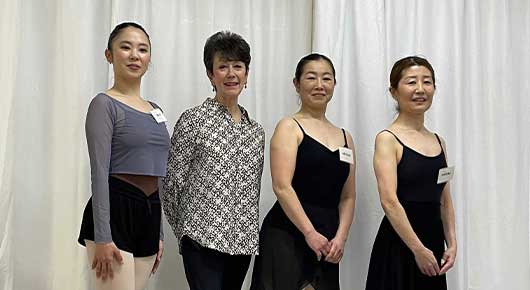24 August 2023
Our teaching and syllabi enable our teachers and students to express their passion and talent. By moving beyond the gendered syllabi, ISTD’s work is becoming more inclusive and accessible than ever.
Major strides
The term ‘travesti’, literally ‘disguised’ in French, refers to the theatrical tradition of one gender depicting another through the role they play. This tradition stretches far back in history, finding its origin in moral restrictions placed upon theatrical productions: women on stage was viewed as immoral, so female roles were often played by youthful men in costume.
Whilst this was commonplace in dance, particularly in Renaissance court ballet, in modern times this tradition has skewed towards depictions of characters with either villainous intent or comedic characteristics, played as rather tongue-in-cheek in both respects, for example Frederick Ashton’s Ugly Sisters in the ballet Cinderella. More recently for the most part, classical ballet roles have been choreographed for dancers of specific gender and performed accordingly.
"Women have been my heroes my whole life… Strong ballet women are my superheroes, and that’s what I want to portray."
However, norms are often challenged, and over the years we’ve seen multiple strides taken to subvert typical gender roles within performances. Here are just a few of many examples:
Frederick Ashton broke the stereotype when he choreographed ‘The Dream’ in 1964 by incorporating pointe work for a male dancer in the role of ‘Bottom’. Bennet Gartside of The Royal Ballet has used his experience of dancing this role to post tutorials on social media which give tips on pointe work for male dancers.
Bennet Gartside of The Royal Ballet shares his tips on pointe work
Matthew Bourne’s works are another example of subversion of the ballet norm. When his all-male swans took to the stage for the world premiere of his ‘Swan Lake’ in 1995 tradition was turned on it’s head to critical acclaim. Ex-Royal Ballet Principal Adam Cooper as Odette/Odile and his corps de ballet of male swans retold the story for a new generation.
In 2018, Chase Johnsey made headlines performing a typically female role for a major ballet company, English National Ballet, as one of the ladies in the Prince’s court in The Sleeping Beauty. When questioned about why he’d want to dance as a ballerina, Chase said "women have been my heroes my whole life… Strong ballet women are my superheroes, and that’s what I want to portray."
More recently, Californian company Ballet 22 was founded in 2020 to "push the boundaries of what is possible in ballet by breaking gender-normative stereotypes specifically through the ungendered use of pointe shoes."
 Shirley MacLaine (center) and Les Ballets Trockadero de Monte Carlo from her 1977 television special "Where Do We Go From Here?"
Shirley MacLaine (center) and Les Ballets Trockadero de Monte Carlo from her 1977 television special "Where Do We Go From Here?"
Officially founded in 1974 (shortly after the Stonewall Riots) by members of the Trockadero Gloxinia Ballet Company, Les Ballets Trockadero de Monte Carlo is an all-male ballet troupe. Turning convention on its head, Les Ballets Trockadero de Monte Carlo specialises in ballet performances en travesti – male performers dancing in drag as women, including dance en pointe.
Pointe work is an element of dance that has been traditionally restricted to female performers since its popularisation in the 1800s, with extensive training and practice required to safely perform without injury. Whilst male roles would occasionally include pointe work, it was somewhat of a rarity to see men perform entirely en pointe – until Les Ballets Trockadero de Monte Carlo popularised this in their own right.
By “boldly defying classical ballet’s conventional gender classification”, the ‘Trocks’ have become known worldwide for their comedic and highly skilled takes on classic ballets, whilst being staunch advocates and spokespeople for the LGBTQIA+ community in their outreach work.
What we're doing at ISTD
The ISTD has recently conducted a review of its portfolio of examinations to ensure that they are valid, accessible and fair to all learners. This process included the removal of gender terminology to eliminate any expectation that a candidate should follow a gender-specific training route across all of our genres. Initially, teachers will see these updates in syllabus outlines and specifications published at istd.org, and over time they will see these changes in printed syllabus books and accompanying resources.
In both the Cecchetti and Imperial Classical Ballet faculties of the ISTD, changes have been made to ensure that candidates have a choice of training pathway, meaning that at a certain level, candidates can choose to learn pointe work or virtuosity steps.









